Editorial board profiles
Wolfgang Maret
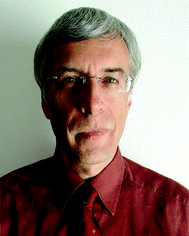
Wolfgang Maret FRSC obtained his MSc (chemistry) and PhD (natural sciences) from Saarland University, Saarbrücken, Germany. After postdoctoral research at the University of Chicago (Department of Biophysics & Theoretical Biology), his first faculty appointment was in the Research Center of the late Bert L. Vallee at Harvard Medical School. In 2002, he joined the University of Texas Medical Branch in Galveston, TX as an Associate Professor. He is now a Senior Lecturer in Iron Metabolism at King's College London, UK (Metal Metabolism Group, Division of Diabetes and Nutritional Sciences, School of Medicine). His research interests began with the catalytic mechanism of metalloenzymes as investigated with spectroscopic and kinetic methods and continued with the role of metal ions in health and disease, the molecular mechanisms of how proteins control nutritionally essential metal ions, and the cellular mechanism of how metal ions control protein structure and function. At the end of 2012, he started a 2-year term as president of the International Society for Zinc in Biology.
Rachel Austin

Rachel Narehood Austin is a bioinorganic chemist in the Department of Chemistry at Bates College. She joined the faculty in 1995 after completing a PhD at the University of North Carolina at Chapel Hill. Her laboratory has a long-standing interest in understanding the mechanisms of metalloenzymes, especially those important in the global cycling of elements, and developing and characterizing heterogeneous catalysts that can be used for green chemistry or environmental remediation. A major emphasis of her current research is the development of a detailed picture of both the structures and mechanisms of the metalloenzymes that have evolved to catalyze the oxidation of alkanes. Funding for the lab has been received from National Science Foundation (including grants for an EPR spectrometer with low temperature capabilities, a GC-MS and GC-FID, a 400 MHz NMR, in addition to research support), NIH, the Howard Hughes Medical Institute through several institutional grants to Bates College, the Merck/AAAS research fund, Pfizer, DOE, and the Dreyfus Foundation in the form of a Henry Dreyfus Teacher Scholar Award. She is a past chair (together with co-chair Ariel Anbar) of the Environmental Bioinorganic Chemistry Gordon Research Conference.
David Koppenaal
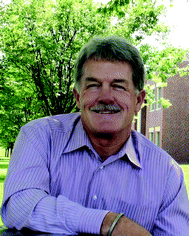
David W. Koppenaal is Chief Technology Officer at the Environmental Molecular Sciences Center (EMSL) at Pacific Northwest National Laboratory in Richland, WA. Dr Koppenaal's research interests include the development of new instrumental techniques for metallomics applications and the metallomic study of cyanobacterial systems. Dr Koppenaal was an early proponent of metallomics as a new science discipline, serving as an advocate and speaker on this topic since 2000, and organizing the first symposia focused on this topic in the US, and more recently serving as co-chair of the 2nd International Metallomics Symposium in 2009. Dr Koppenaal is well-known for his fundamental science investigations and innovations in atomic mass spectrometry, including the initial development and demonstration of effective reaction cell technology and associated ion molecule reaction approaches for interference reduction in ICPMS. More recently he has developed and applied ultra-high resolution orbital trapping techniques to metallomics applications. Dr Koppenaal has also served as Editorial Board member of the Journal of Analytical Atomic Spectrometry, and as Chair of the Analytical Division of the American Chemical Society. He is a Fellow of the Royal Society of Chemistry and the American Association for the Advancement of Science.
Ryszard Lobinski
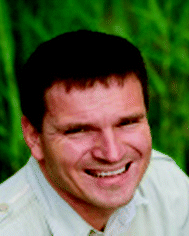
Ryszard Lobinski is research director at the CNRS (Laboratory of Analytical Bioinorganic and Environmental Chemistry in Pau) and professor of chemistry at the Warsaw University of Technology. He obtained his PhD (1989) and DSc (habilitation) (1994) degrees from the Warsaw University of Technology, Poland. He held postdoctoral positions at the Institute of Spectroscopy and Applied Spectrometry (ISAS) in Dortmund (1990) and at the University of Antwerp (UIA) (1991–1994) before joining the National Research Council of France (CNRS) in 1994. Dr Lobinski is the author or co-author of more than 200 articles in international journals, 3 books, 3 edited journal issues, and of 90 invited lectures at international meetings. He received the CNRS 2006 Silver Medal and is a Fellow of the Royal Society of Chemistry. He is also the co-director of UltraTrace Analyses Aquitaine (UT2A) (a startup company at the University of Pau) and past-President of the Analytical Chemistry Division of IUPAC. His principal research interest is the development of analytical approaches to species-specific (speciation) analysis for trace and ultratrace metals in environmental and nutritional chemistry and in life sciences.
Yasumitsu Ogra
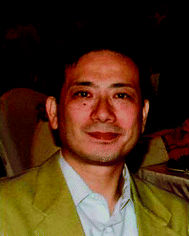
Yasumitsu Ogra obtained his BS degree from Tokyo University of Pharmacy and Life Sciences in 1991, and his PhD from Chiba University (Japan) in 1996. He has continued to carry out scientific research as a post-doctoral fellow at National Institute of Industrial Health (Japan), and has worked in the Department of Toxicology and Environmental health, Graduate School of Pharmaceutical Sciences, Chiba University as a research associate (1997–2003) and an associate professor (2004–2009). He was a visiting scientist of the French National Research Council (CNRS) in 2002 and 2003. Since April 2009, he has been a full professor of Laboratory of Chemical Toxicology and Environmental Health, Showa Pharmaceutical University, Tokyo, Japan. His current research interests include the elucidation of mechanisms underlying physiological and toxicological effects of metals and metalloids, and the development of a novel approach to metal/metalloid toxicology by a combination of speciation/fractionation of metals/metalloids and molecular biological techniques. He has a particular interest in toxicology in metallomics, i.e., toxicometallomics.
Nigel Robinson
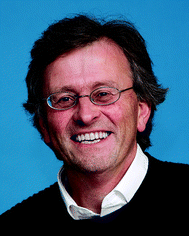
Nigel Robinson is Biophysical Sciences Institute Biology Professor at the University of Durham. He completed his undergraduate degree in 1981 at the University of Liverpool, specialising in Botany, and completed a doctorate in 1984 with David Thurman on the mechanism of copper tolerance in Mimulus guttatus. Supported by Fellowships from the Natural Environment Research Council, and Directors-office of Los Alamos National Laboratory, he worked with Paul Jackson at LANL (1984–1987) then held a Royal Society University Research Fellowship at Durham University, UK (1987–1994) to gather genetic resources for metal-homeostasis. He was awarded the President’s medal of the Society for Experimental Biology in 1993 in recognition of his distinguished work on metalloproteins and metal interactions with plant and microbial cells. In 1994 he was appointed to the chair of Genetics in the Medical School at Newcastle University and in 2011 to his current post in Durham. He has trained two-dozen postgraduates, written ca. one hundred papers, served as editorial advisor to Molecular Microbiology and the Biochemical Journal, organised more than a dozen metals-related conferences, delivered more than a hundred invited lectures and co-instigated (with Dr Dennis Winge of the University of Utah) the Gordon Research Conference series on the Cell Biology of Metals. With nearly a half of enzymes estimated to need metals he has contributed to the understanding of how cells assist proteins to acquire the correct metals.
David Salt
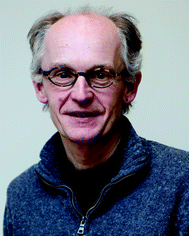
David Salt has a long term research interest to understand the function of the genes and gene networks that regulate the plant ionome (elemental composition), along with the evolutionary forces that shape this regulation. To achieve this his laboratory couples high-throughput elemental profiling, with bioinformatics, genomics and genetics, in both genetic model species (yeast, Arabidopsis and rice) and “wild” plants (Astragalus, Thlaspi and Pteris). Dr Salt became involved in such work began during his PhD studies (Liverpool University, UK, 1985–1988) working on the mechanisms of copper tolerance in Mimulus guttatus (yellow monkey flower). He has a BSc in Biochemistry (University of North Wales, Bangor, UK, 1981–1984) and an MSc in Computer Science (Hallam University, UK, 1984–1985). He has published more than 115 peer reviewed papers since 1989 with approximately 7200 citations (h-index = 41). During his career he has been awarded competitive research funding from USDA, DOE, NSF, NIH and ERC. He has served on the editorial teams of several journals including Plant Physiology and is currently on the editorial board of Molecular Plant, and Plant and Cell Physiology.
Bibudhendra Sarkar
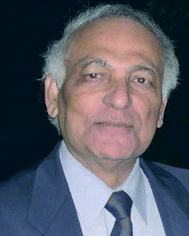
Bibudhendra (Amu) Sarkar is a leading authority in Inorganic Biochemistry. He obtained his PhD in Biochemistry from the University of Southern California, Los Angeles, where he worked under the co-supervision of Paul Saltman and Bo Malmström, then a visiting professor from Sweden and later the Chairman of the Nobel Foundation's Chemistry Nobel Prize Committee in Sweden. He studied protein chemistry with Hal Dixon at the University of Cambridge, UK, and quantum biochemistry with Madame Alberte Pullman at the Université de Paris-Sorbonne, France. He joined the University of Toronto and the Hospital for Sick Children where he established his research career on metal-related genetic diseases and the impact of heavy metals in the environment on human health. He became a full professor in 1978. He was the Head of the Department of Structural Biology and Biochemistry from 1990 to 2002 and Director of the Advanced Protein Technology Center from 1998 to 2002. He discovered the copper–histidine treatment of Menkes' disease, a devastating neurodegenerative disease in children caused by a genetic defect of copper transport. His pioneering research on the structure and function of metal-binding proteins led to the discovery of ATCUN motif, which can serve as a probe for protein structure determination by paramagnetic relaxation enhancement NMR spectroscopy and selective cleavage of DNA. Professor Sarkar has received numerous awards and honours including the MRC Scholar Award of Canada; Nuffield Foundation Award of UK; Member of the High Table, King's College, University of Cambridge; Visiting Professor at the Université Paris-Nord; Fellow of the Royal Society of Chemistry, UK; Fellow of IUPAC; Fellow of the Chemical Institute of Canada and many others. He continues his research in the area of metal-related genetic diseases with a special emphasis on Wilson's and Menkes' diseases and studies the effects of toxic metals in the environment and the impact on human health.
Hongzhe Sun
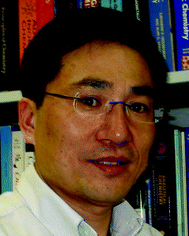
Hongzhe Sun obtained his PhD from the University of London with Peter J. Sadler in 1996. After postdoctoral work at the University of Edinburgh, he joined the Department of Chemistry at the University of Hong Kong in 1998 where he is currently a professor. He is the recipient of the NSFC Outstanding Young Scholar Award in 2005, and serves on the Advisory Board of the Journal of Biological Inorganic Chemistry. His research interests are centred on metallodrugs and metalloproteins, inorganic structural biology and metallomics.
| This journal is © The Royal Society of Chemistry 2013 |
